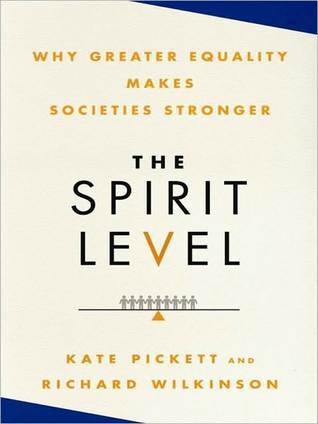More on this book
Community
Kindle Notes & Highlights
Read between
March 5 - March 7, 2021
both the broken society and the broken economy resulted from the growth of inequality.
Economic growth, for so long the great engine of progress, has, in the rich countries, largely finished its work. Not only have measures of wellbeing and happiness ceased to rise with economic growth but, as affluent societies have grown richer, there have been long-term rises in rates of anxiety, depression and numerous other social problems.
Life expectancy is unrelated to differences in average income between rich countries.
Death rates are closely related to differences in income within societies.7
Where income differences are bigger, social distances are bigger and social stratification more important.
The evidence shows that reducing inequality is the best way of improving the quality of the social environment, and so the real quality of life, for all of us.
The answer turns out to be a picture of increasing anxieties about how we are seen and what others think of us which has, in turn, produced a kind of defensive attempt to shore up our confidence in the face of those insecurities. The defence involves a kind of self-promoting, insecure egotism which is easily mistaken for high self-esteem.
the most powerful sources of stress affecting health seem to fall into three intensely social categories: low social status, lack of friends, and stress in early life. All have been shown, in many well-controlled studies, to be seriously detrimental to health and longevity.
People’s sense of identity used to be embedded in the community to which they belonged, in people’s real knowledge of each other, but now it is cast adrift in the anonymity of mass society. Familiar faces have been replaced by a constant flux of strangers. As a result, who we are, identity itself, is endlessly open to question.
In the United States, two out of every three murders are committed with guns, and homicide rates are higher in states where more people own guns.
The degree of civilization in a society can be judged by entering its prisons. Fyodor Dostoevsky, The House of the Dead
In fact, far from enabling the ideology of the American Dream, the USA has the lowest mobility rate among these eight countries.
In Norway, the most equal of the eight, almost all (97.8 per cent) spending on school education is public expenditure.273 In contrast, in the USA, the least equal of this group of countries, only about two-thirds (68.2 per cent) of the spending on school education is public money.
Thorstein Veblen, who said: ‘The only practicable means of impressing one’s pecuniary ability on the unsympathetic observers of one’s everyday life is an unremitting demonstration of the ability to pay.’ Veblen’s Theory of the Leisure Class, published in 1899, was the first major work on the relationship between consumption and social stratification. It was he who introduced the term ‘conspicuous consumption’ and emphasized the importance of ‘pecuniary emulation’ and ‘invidious comparisons’.


